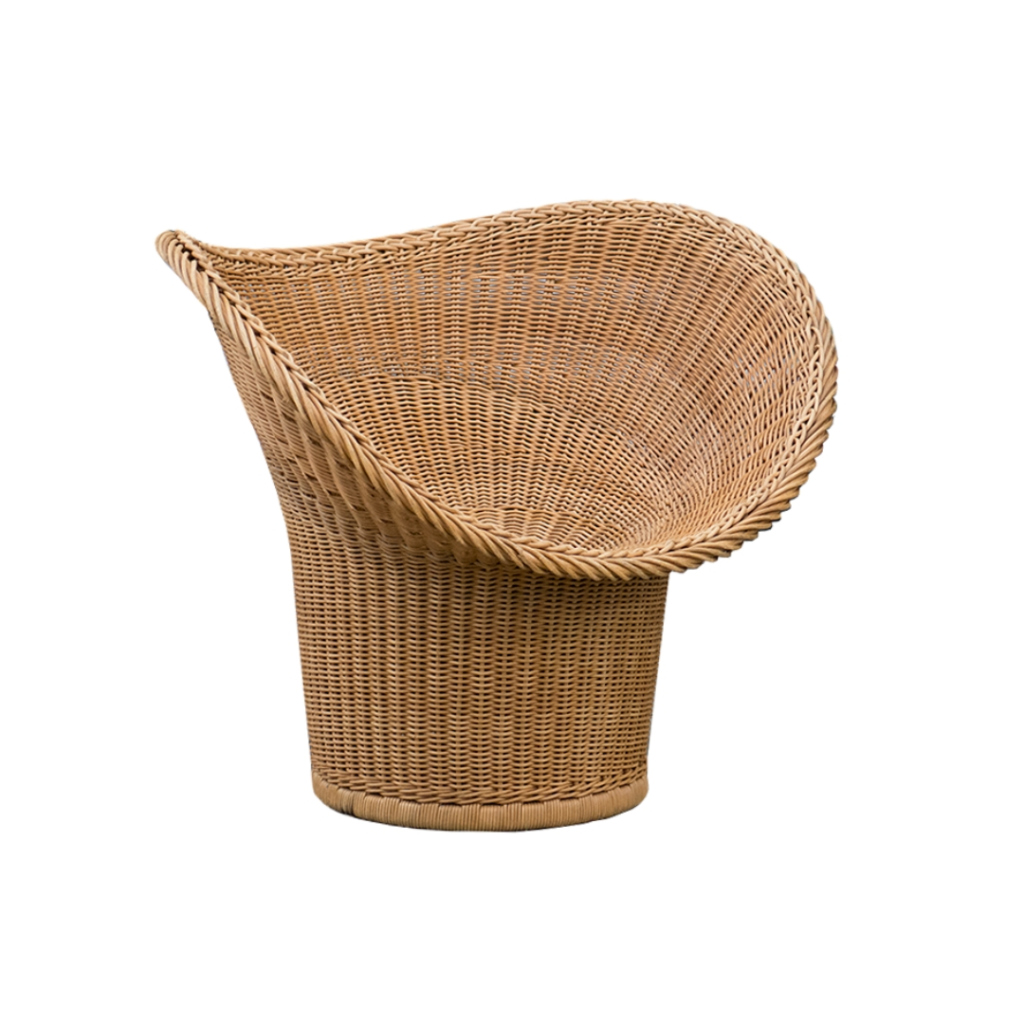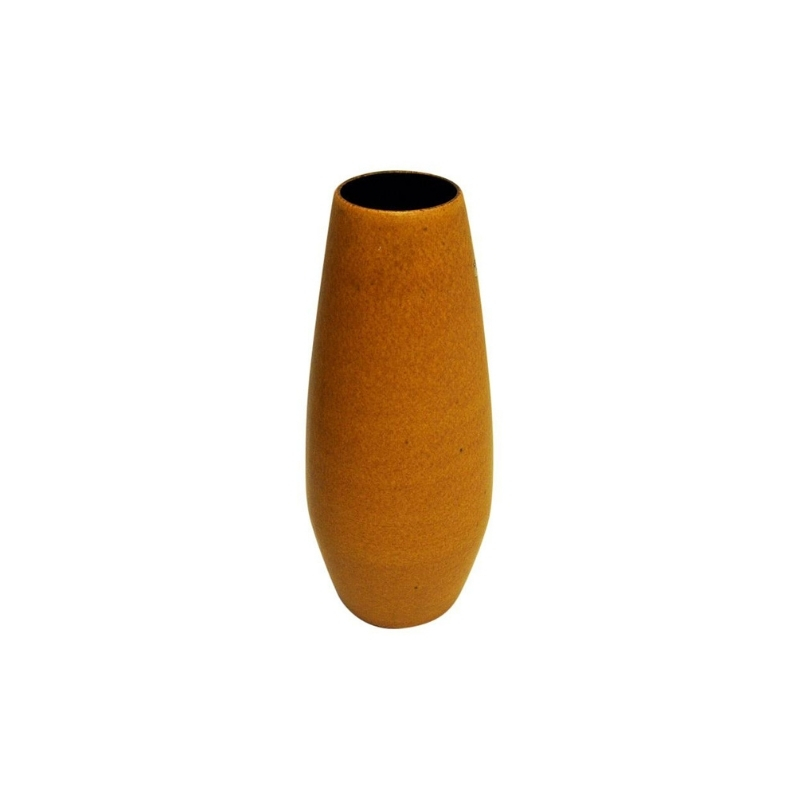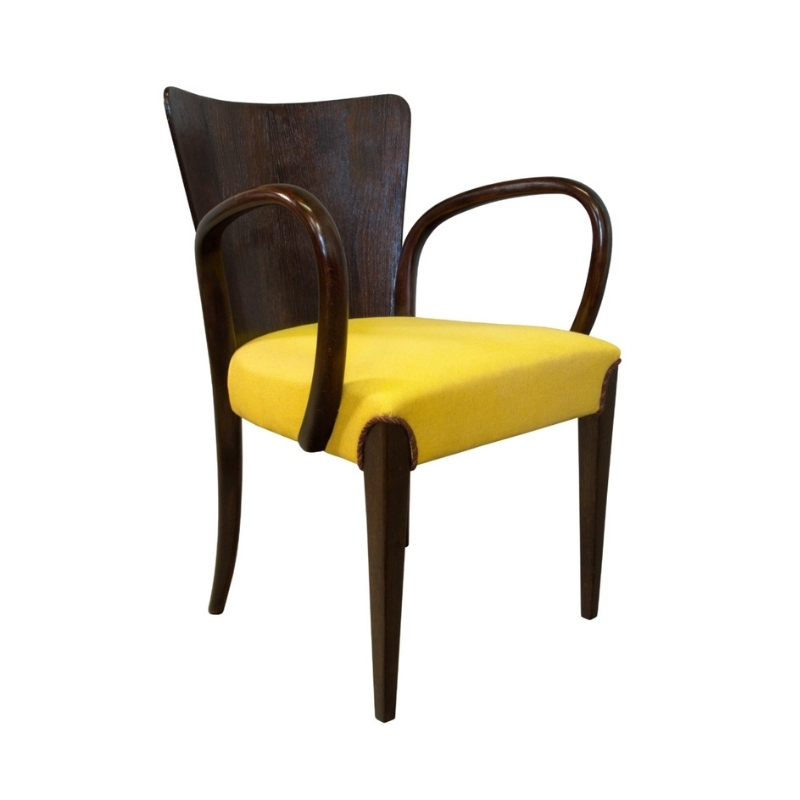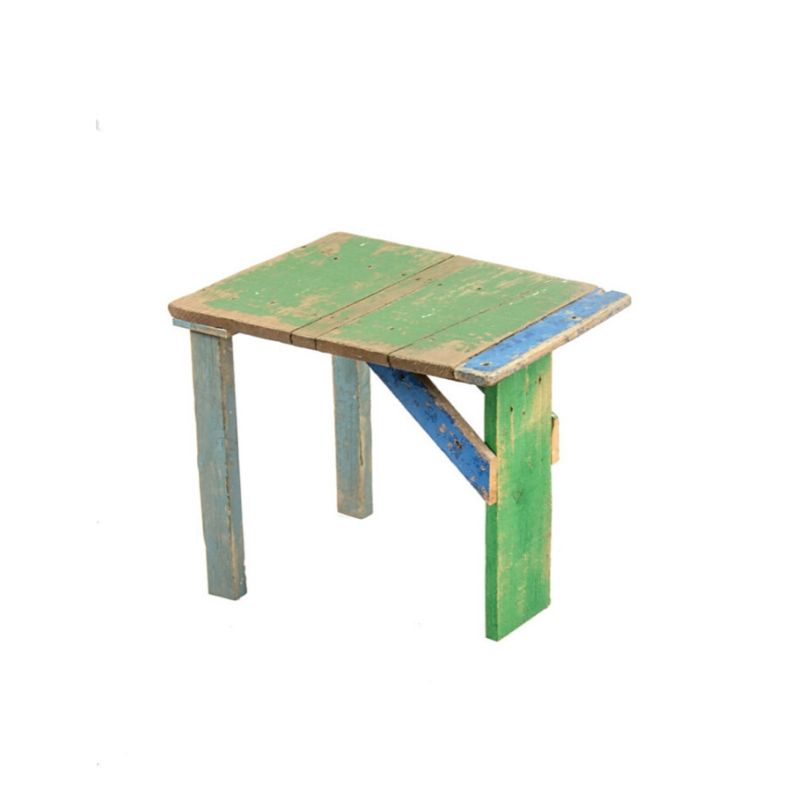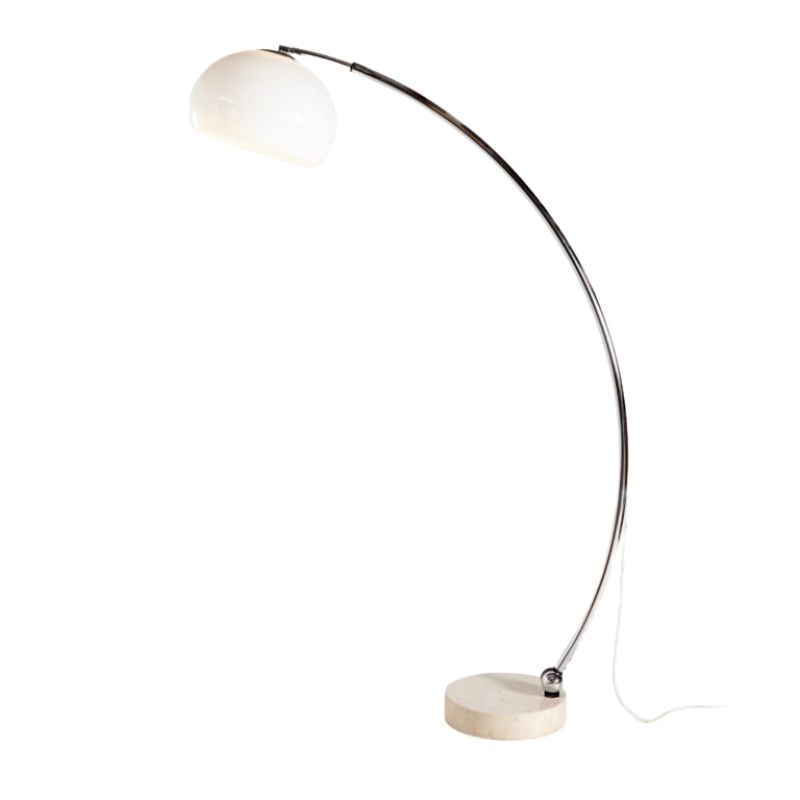Hello all,
This hutch was purchased by a family member in 1986 at an import dealer's show in Pittsburgh, PA. She had lost it as a result of a divorce and recently regained possession. When purchased, there was provenance in the form of documents indicating that the piece was on exhibit during the 1903 Paris Exposition. Sadly, the documentation has disappeared.
As you can see, it appears to be a transitional Arts and Crafts cabinet with Art Nouveau brass fixtures.
All oak, the frames and other components are quarter-sawn. It's three pieces - the two side shelving units and the protruding center china cabinet.
Thankfully, there are two marks to help with its identification - a gallery stamp on the interior of the top drawer, and a manufacturer's mark on the back of the lower central cabinet. It's this mark I'm hoping to identify.
Any help with this would be greatly appreciated. I'm aware that the site is dedicated to modern and post-modern design, so please forgive the off-topic request. My hope is that, as some members may be geographically closer to its original source of manufacture, someone might be able to direct me in my search.
BTW, your site is splendid and I've bookmarked it for frequent visits. Having grown up with Scandinavian furnishings, and having recently (and sadly) disposed of them through auction, it's a delight to see the wonderful designs on display here.
Best regards,
Stephen
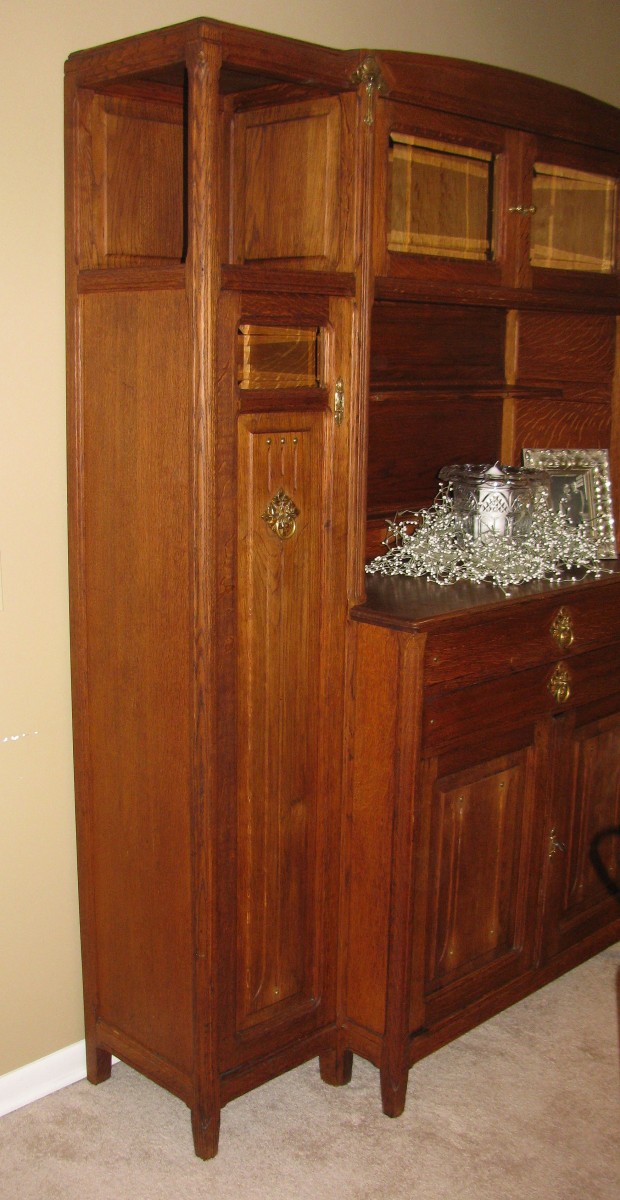 <img class="wpforoimg" src=" http://d1t1u890k7d3ys.cloudfront.net/cdn/farfuture/v4Tv2vvXc2ne5_Ptml1r1
<img class="wpforoimg" src=" http://d1t1u890k7d3ys.cloudfront.net/cdn/farfuture/v4Tv2vvXc2ne5_Ptml1r1
Not sure if we are in the same timeline & thinking of the same World's Fair or Exposition, there is a 1900 Paris Exposition, 1903 is listed as held in Japan.
https://en.m.wikipedia.org/wiki/List_of_world%27s_fairs
I can't help you with the ID of the mark but it is in French so French for sure. The piece as you described is a crossover of styles of the late 19th century & early part of the 20th century. Your piece is considered (early) modern. The form of your piece definitely did not copy a previous style or period. Like many early modernist designers who rejected the revivalist aesthetic & the low quality of the industrial revolution/factory made products of the 19th century. Your piece is on the conservative side compared to others works of the same period, the likes of Charles Renee Mackintosh, Peter Behrens, Otto Wagner & others.
The most famous French furniture designers from that period that I can recall at the moment are Emille Galle & Louis Majorelle but there are other numerous French designers as well.
Sorry if I can't be of much help but if you have the time, try researching or find books or an archive of that particular World's Fair or Exposition your piece was exhibited at.
Thanks for the response, minimoma. There was, apparently, a 1903 Paris exposition (Exposition Universelle Paris 1903) which was, unlike the 1900 exposition, not a world's fair. I think that there may have been annual expositions for a period of time in the early part of the 20th century, but I could easily be mistaken.
I've found little about it, but here, for example, is a library reference to what I presume to be a catalog or broadside:
http://data.bnf.fr/11668891/exposition_internationale_de_l_habitation/#o...
Attached, as well, is a medal from the exposition.
I sense that this was a minor cabinet maker and that perhaps the gallery was the exhibitor. Nonetheless, it's a unique transition piece and I'm hoping that a contributor is familiar with its manufacture.
Thanks again.
This piece was made by Mathieu Gallerey, a lesser known designer who worked in Paris. There is a short section describing his work in "Art Nouveau Furniture" by Alastair Duncan. This piece is illustrated in "The Paris Salons 1895-191, Volume III: Furniture" also by Duncan, page 243, identified as model 'roses'. This reference dates the piece to 1909.
Both stamps on the piece are his, "M. Gallerey" and the "M over G" mark. I've seen pieces with either, or both marks, like yours.
Given the maker, I would describe this piece as "late Art Nouveau breakfront", but I agree it has a very Arts & Crafts feel.
Another example of this piece is available online at: http://www.puritanvalues.co.uk/13797.htm
Hope this helps. Best Regards.
Thank you so much for this information! The piece at your link is identical, with the original patina. I'm guessing that the owner was incorrect about the provenance, as the linked text suggests that Gallerey exhibited at the Paris1906 Les Decorative Arts. There must have been paperwork with this reference, which she mistakenly presumed was specific to this piece.
Splendid work and, again, much appreciated.
Here's where it was made, I think (if the address is indeed 2 Rue de la Roquette---kinda hard to make out)---
http://www.parisladouce.com/2017/01/paris-passage-du-cheval-blanc-la.html
If you need any help, please contact us at – info@designaddict.com




